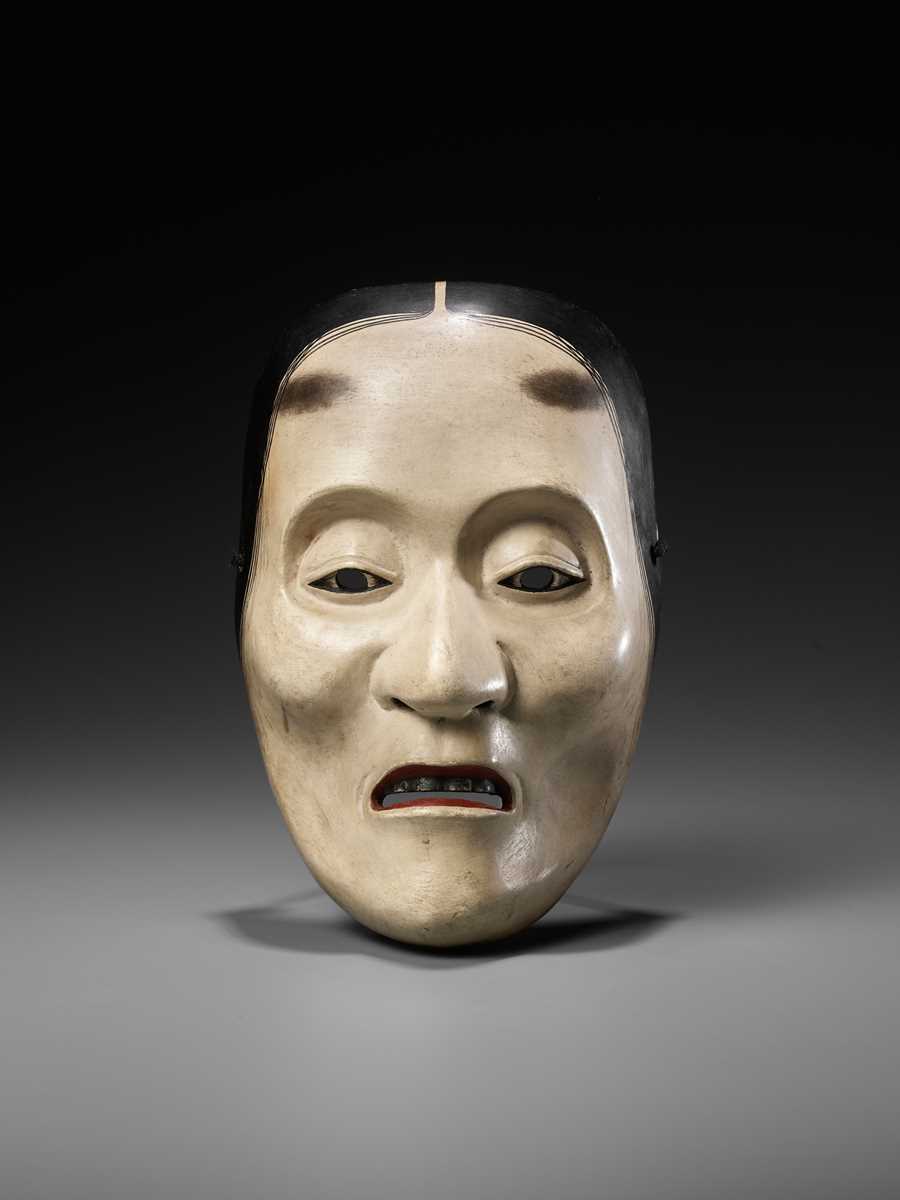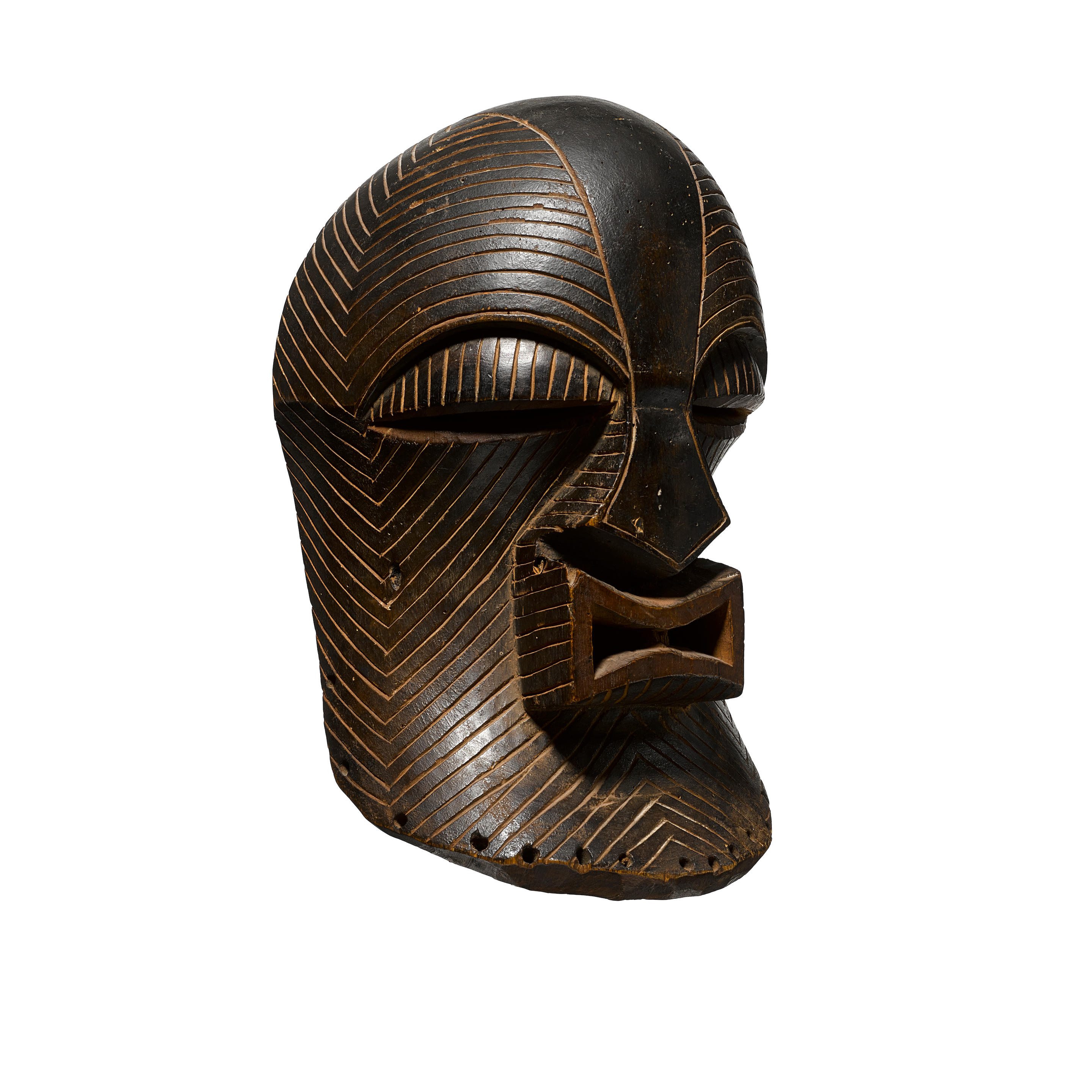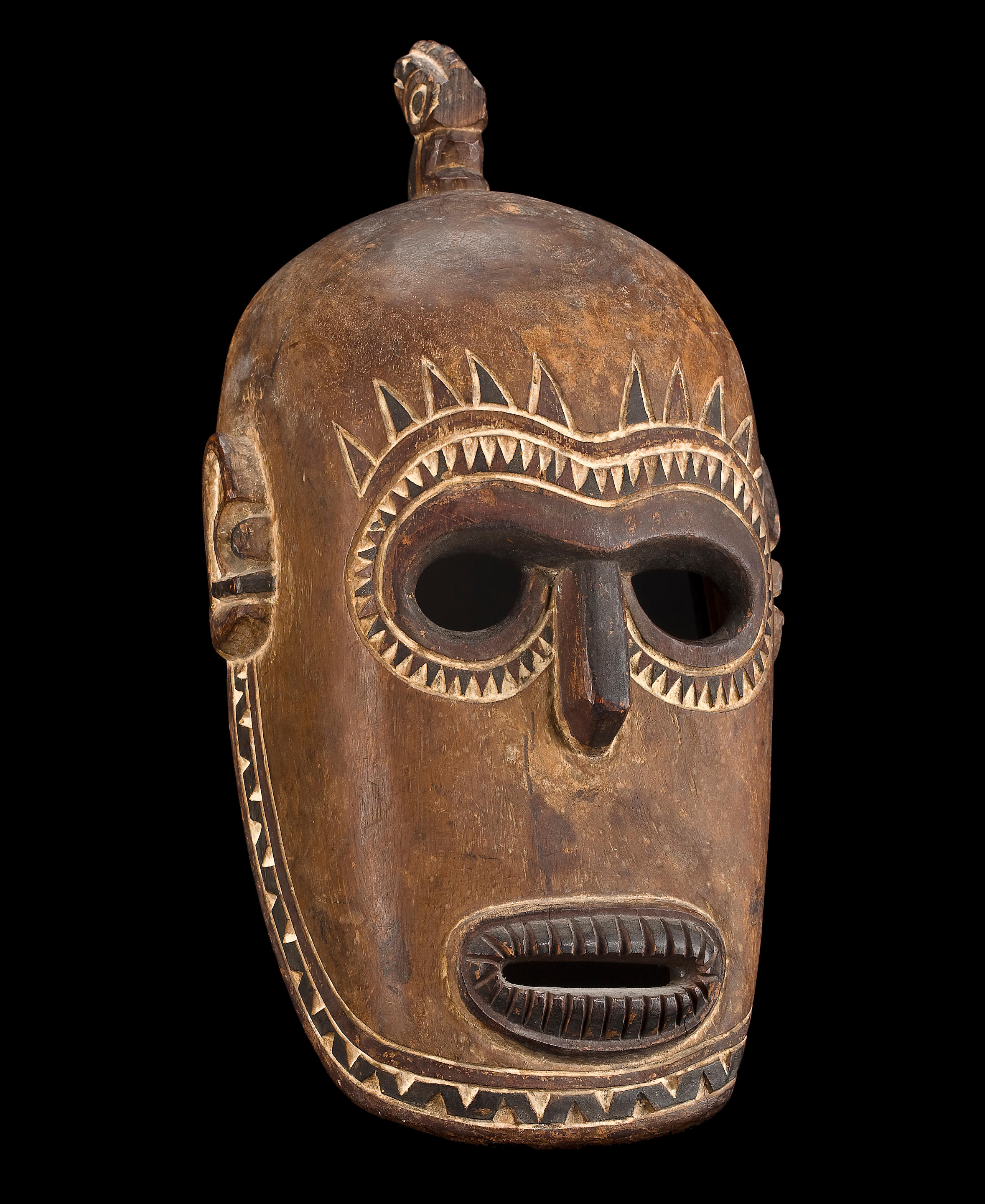A RARE SPIRIT MASK 'BARAK' OR 'YAMBURAI PARAK'
EASTERN SEPIK PROVINCE, NEW GUINEA, LATE 19TH - EARLY 20TH CENTURY
Wood, remains of polychrome, modern stand
mask 45cm high, 35cm deep
Provenance:
UK Art Market
Ex Private collection
Literature:
'New Guinea Art, Masterpieces from the Jolika collection of Marcia and John Friede, Fine Arts Museum San Francisco, vol. 2, pg. 89. ill. 39
Originally these masks were brightly coloured. However, after many years of exposure within the ceremonial houses the colour faded away through use and weathering. The mask was traditionally worn by a dancer whose plant fibre costume completely covered him, and was associated with an important male mythical being. The Barak (sometimes spelled 'barag' or 'brag') were situated to the west of the Sepik River.
The Sepik River was first explored in 1885 by Otto Fisch. He wrote of the region's cultural diversity and beauty of the villages that he saw on the banks of the river over which towered the 'men's houses'.
In the early 20th century collectors of primitive art were astounded at the sheer quantity of marvellous objects to be found in this region and the extraordinary inventiveness of the forms in this difficult swampy terrain.
A RARE SPIRIT MASK 'BARAK' OR 'YAMBURAI PARAK'
EASTERN SEPIK PROVINCE, NEW GUINEA, LATE 19TH - EARLY 20TH CENTURY
Wood, remains of polychrome, modern stand
mask 45cm high, 35cm deep
Provenance:
UK Art Market
Ex Private collection
Literature:
'New Guinea Art, Masterpieces from the Jolika collection of Marcia and John Friede, Fine Arts Museum San Francisco, vol. 2, pg. 89. ill. 39
Originally these masks were brightly coloured. However, after many years of exposure within the ceremonial houses the colour faded away through use and weathering. The mask was traditionally worn by a dancer whose plant fibre costume completely covered him, and was associated with an important male mythical being. The Barak (sometimes spelled 'barag' or 'brag') were situated to the west of the Sepik River.
The Sepik River was first explored in 1885 by Otto Fisch. He wrote of the region's cultural diversity and beauty of the villages that he saw on the banks of the river over which towered the 'men's houses'.
In the early 20th century collectors of primitive art were astounded at the sheer quantity of marvellous objects to be found in this region and the extraordinary inventiveness of the forms in this difficult swampy terrain.















Testen Sie LotSearch und seine Premium-Features 7 Tage - ohne Kosten!
Lassen Sie sich automatisch über neue Objekte in kommenden Auktionen benachrichtigen.
Suchauftrag anlegen